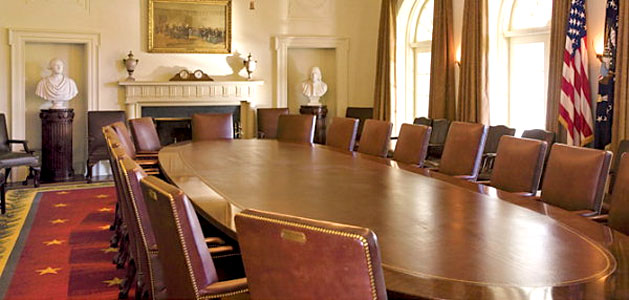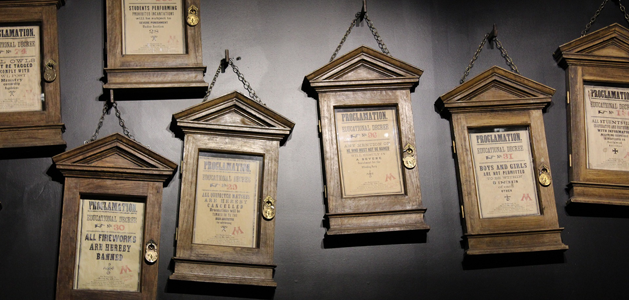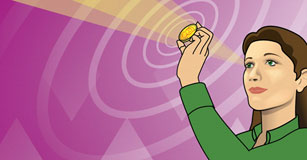The President's Team
After researching positions in the President's Cabinet, students nominate literary characters for each seat and develop presentations to promote them for the position.

Task
The President of the United States needs a board of advisors to help the make informed decisions in a range of areas. Students will research cabinet positions and nominate characters from literature to fill each position in the Cabinet. Students will choose one position and use evidence from text to develop a presentation to promote the candidate for that position.
Engage
The goal of this lesson is to educate the students on the different cabinet positions and how these positions advise the President on issues faced by the United States. Since students are still forming political views, this lesson asks them to use what they know about literary characters to think deeply about skills, character traits, and experiences needed for these positions.
Begin by introducing the Executive Branch of the government and the role of the President’s Cabinet. Established by the Constitution in Article II, Section 2, “the Cabinet's role is to advise the President on any subject he may require relating to the duties of each member's respective office.” As key advisors to the President, these people filling these positions must be confirmed by the Senate.
Discuss skills and qualities students think the President should consider for these positions. As a class, brainstorm the ideals a cabinet member should hold and create a graphic organizer or anchor chart listing these ideals. Are there any factors that should deter the President from selecting someone for a position on the cabinet?
Create a Graphic Organizer
Need a thought web, timeline, flowchart, or other graphic organizer for a lesson?
CreateRather than sharing the list of posts in the Cabinet first, have students brainstorm and discuss important issues for the United States today. Then, share the list of cabinet posts and connect these positions to the issues they have listed. For example, if they mention healthcare, introduce the role of the Secretary of Health and Human Services and if they mention jobs, introduce Secretary of Labor.
Entire List Of Cabinet Posts
- Secretary of State
- Secretary of the Treasury
- Secretary of Defense
- Attorney General
- Secretary of the Interior
- Secretary of Agriculture
- Secretary of Commerce
- Secretary of Labor
- Secretary of Health and Human Servicies
- Secretary of Housing and Urban Development
- Secretary of Transportation
- Secretary of Energy
- Secretary of Education
- Secretary of Veteran Affairs
- Secretary of Homeland Security
To help students prepare to fill and justify characters filling cabinet positions take time to explore the role or goal of each department lead by a cabinet member. After learning more about them, you might ask students to debate which role is most important, justifying their reasoning.
Once students have a grasp of each department included in the Cabinet, develop job postings for each cabinet position.
The job posting should include:
- Cabinet title
- Cabinet description
- The cabinet positions needed qualifications
- The issues that the cabinet member will likely face
Create
Have individual students or small teams choose a cabinet position they would like to fill. Students should review the experience, skills, and qualities necessary for this position and then brainstorm a list of characters from literature that would be qualified.
Students will need to look at the qualities of each character and the traits that would make them the best leader for that role. Students could create a Pros and Cons organizer for each candidate to help them choose the specific character they will propose to fill the position.
Ideas to consider:
- Traits of a leader and how their chosen character portrays these traits.
- Additional experiences and skills the character brings to the role.
- Potential drawbacks for the candidate.
Once a specific candidate is chosen, students review the literature about their nominee and locate evidence that this person is qualified and fit to hold the position.
All cabinet nominees must be approved by the Senate. To help persuade the senate to approve their nomination, students next create a presentation about the position. Students should to share events and evidence from the text that highlights the character’s traits and their ability to fill the cabinet post effectively. Students should also be prepared to respond to questions designed to discredit their nominee.
Share
Before students share the presentations about their nominees, choose a group to represent the Senate. This could be comprised of students or other faculty from your school, such as your media specialist. This group should be knowledgeable of a range of literary characters and are expected to ask pointed questions about the characters, poking holes in the nominations. This group can decide if the nomination is approved.
If time is restricted, have students record audio for each page of the presentation so the “Senate” can evaluate and approve the nomination.
Assessment
As the students work on their nomination list and nominee presentation, listen to their discussions to ensure they understand the role of the Cabinet and know their characters well enough to defend their nomination.
The final presentation will help you assess their ability to analyze a character’s traits and the qualities needed to be a leader as well as more about the departments in the Executive Branch.
Resources
Michael Rajczak. Meet the President's Cabinet ISBN: 1433972611
Catherine Stier. If I Were President. ISBN: 0807535427
Fact Monster: The President’s Cabinet (great summary of role of each department)
About News: The President’s Cabinet (commercial but quality links)
Ducksters: The US Cabinet (good for younger students)
Standards
C3 Framework for Social Studies
D2.Civ.1.3-5
Distinguish the responsibilities and powers of government officials at various levels and branches of government and in different times and places.
D2.Civ.5.3-5
Explain the origins, functions, and structure of different systems of government, including those created by the U.S. and state constitutions.
D2.Civ.6.3-5
Describe ways in which people benefit from and are challenged by working together, including through government, workplaces, voluntary organizations, and families.
D2.Civ.4.6-8
Explain the powers and limits of the three branches of government, public officials, and bureaucracies at different levels in the United States and in other countries.
D2.Civ.5.6-8
Explain the origins, functions, and structure of government with reference to the U.S. Constitution, state constitutions, and selected other systems of government.
Common Core Standards for English Language Arts - Grade K-5
CCSS.ELA-LITERACY.CCRA.R.1
Read closely to determine what the text says explicitly and to make logical inferences from it; cite specific textual evidence when writing or speaking to support conclusions drawn from the text.
CCSS.ELA-LITERACY.CCRA.W.1
Write arguments to support claims in an analysis of substantive topics or texts using valid reasoning and relevant and sufficient evidence.
CCSS.ELA-LITERACY.CCRA.W.4
Produce clear and coherent writing in which the development, organization, and style are appropriate to task, purpose, and audience.
CCSS.ELA-LITERACY.CCRA.W.9
Draw evidence from literary or informational texts to support analysis, reflection, and research.
CCSS.ELA-LITERACY.CCRA.SL.1
Prepare for and participate effectively in a range of conversations and collaborations with diverse partners, building on others' ideas and expressing their own clearly and persuasively.
CCSS.ELA-LITERACY.CCRA.SL.4
Present information, findings, and supporting evidence such that listeners can follow the line of reasoning and the organization, development, and style are appropriate to task, purpose, and audience.
ISTE NETS for Students 2016:
3. Knowledge Constructor
Students critically curate a variety of resources using digital tools to construct knowledge, produce creative artifacts and make meaningful learning experiences for themselves and others. Students:
d. build knowledge by actively exploring real-world issues and problems, developing ideas and theories and pursuing answers and solutions.
6. Creative Communicator
Students communicate clearly and express themselves creatively for a variety of purposes using the platforms, tools, styles, formats and digital media appropriate to their goals. Students:
d. publish or present content that customizes the message and medium for their intended audiences.









